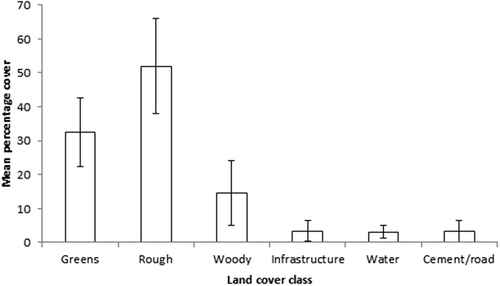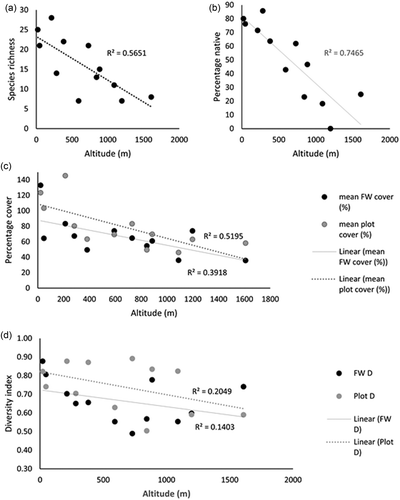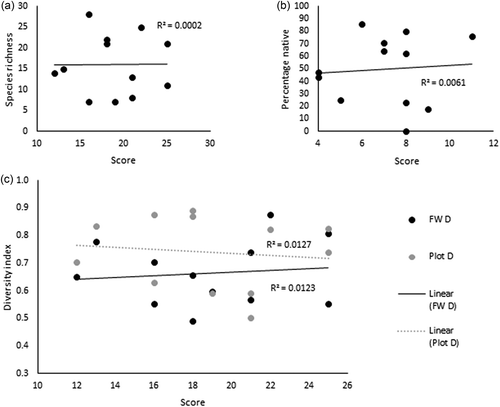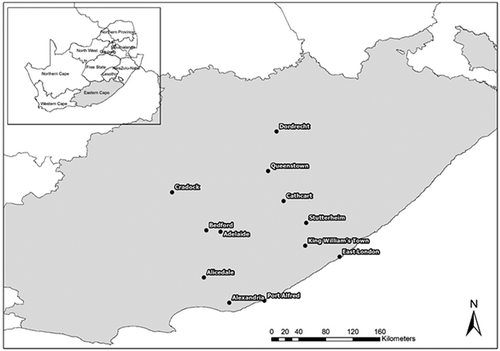Figures & data
Table 1. Attributes of the 12 sites for woody plant determination (SA Explorer, Citation2016; World Weather Online, Citation2016).
Table 2. Management practices that are regarded to promote woody plant biodiversity (Hammond & Hudson, Citation2007). Greenkeepers were asked to rank the degree to which each is implemented on their golf course.
Figure 2. Mean proportions (±SD) of six different ground cover classes on 43 Eastern Cape golf courses representative of 40% of the total size.

Table 3. Woody plant diversity status of the 12 golf courses (FW = plots between fairways; Plot = plots in the rough; D = Simpson’s Diversity Index (1-D).
Table 4. Woody plant species found at each golf course (indigenous species are in bold).
Figure 3. Relationships between four variables: (a) species richness, (b) percentage of native trees, (c) mean percentage cover of fairway and rough, (d) species diversity; and altitude. (FW = plots between fairways; Plot = plots in the rough; D = Simpson’s Diversity Index).

Table 5. Predictor variables, p-values and significance for regression analysis of woody plant species richness.
Figure 4. Relationships between three variables: (a) species richness, (b) percentage of native trees, (c) species diversity; and management scores. FW = plots between fairways; Plot = plots in the rough; D = Simpson’s Diversity Index.


